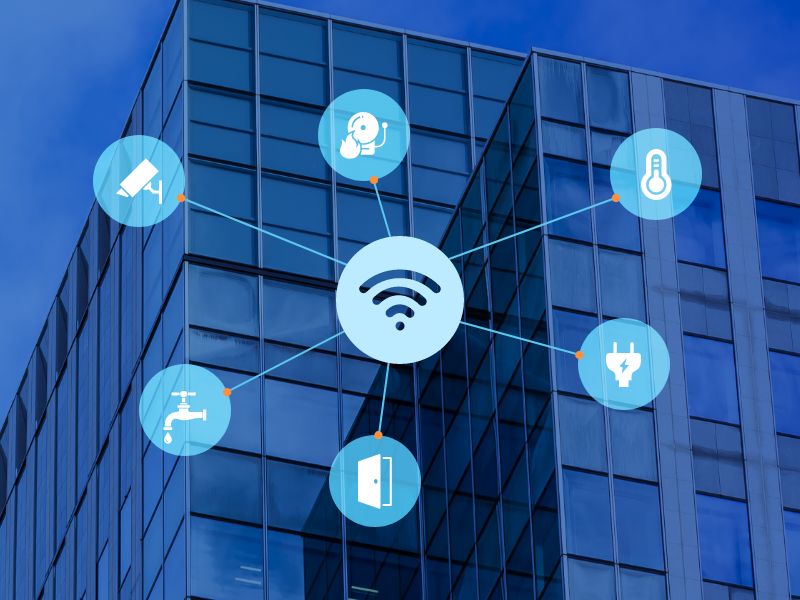8 Must-Know Advantages of Facility Management Software For Building Operations

As an organizational function, facility management integrates processes, people, and places. Enhancing building operations and equipment performance and offering occupants a pleasant experience is important.
However, when there’s no system in place, facilities start experiencing inefficiencies, often seen in improper space utilization and poor maintenance operations.
Using software has become a sound approach to countering these facilities management challenges. This tool is a comprehensive package offering features to optimize building processes, improve resource utilization, and reengineer critical operations such as maintenance.
Today, in the global facility management market worldwide, software for facility management accounts for 45% market share, as the findings of Future Market Insights show. The significance of this massive contribution lies in the fact that such solutions offer several advantages over the traditional manual process of managing buildings.
Each enterprise implementing a building operations solution experiences business-specific advantages. However, there are some common but important advantages, such as the benefits of facility software, that every space and building business witnesses through its implementation, which we discuss here.
How Facility Management Software makes difference in building operations
A comprehensive management tool offers various features that provide managers with sought-after capabilities to streamline building operations and maintenance.
By incorporating this tool into their workflow, managers can unlock many benefits. Let’s delve into the top benefits of facilities management software:
Regulated energy usage
Optimizing energy utilization and higher energy management efficiency is one of the main advantages of facility management software. The tool gives constant insight into how various components, such as lighting systems, HVAC (heating, ventilation, air-conditioning), etc., consume energy.
Good digital solution helps control the energy consumption of these components, which usually consume energy uncontrollably. You can plan schedules to regulate overall energy consumption. Similarly, you can manage zone-wise energy consumption and also alter the energy usage to meet particular needs, as per the demand of a zone in a building.
Simpler yet powerful maintenance management
Through efficient building benefits of facility management software, managers can spot problems early. The systems regularly collect data from various building zones, making it simple for the building managers to examine it and take appropriate action. Also, building operators can obtain pertinent data from anywhere – enabled by remote access.
Some ways the tool assist include:
- Using preventative and predictive maintenance
- Tracking inventory
- Offering strong checklists and workflows to managers
- Giving regular insights about equipment condition
- Triggering alerts for repair and sending out reminders for audits
- Storing and managing asset data
Highly effective emergency response
The effectiveness of emergency response plays a pivotal role in ensuring the safe existence of a building. A good management tool for commercial buildings has all those features necessary to react immediately in an emergency.
Why should you use facility management software in emergencies? In catastrophes like a fire, such solutions can aid in averting human casualties or property damage. By turning off elevators in the impacted areas of a building, it can prevent the smoke from spreading.
Security professionals might be given access through security doors and the fire suppression systems triggered to take control of the situation. This can facilitate a quick response to emergencies, save the lives of the occupants, and minimize property damage. Here’s how this tool helps in emergencies:
- Access control and security: During emergencies, security professionals need quick access to affected areas to assess the situation and provide assistance. It allows for seamless access control through security doors, ensuring authorized personnel can enter the necessary areas promptly. This enables security teams to effectively respond to emergencies and take appropriate actions to mitigate risks.
- Integration with fire suppression systems: Modern facility management technology can integrate with fire suppression systems, such as sprinklers and alarms, to immediately control the situation. As part of an integrated facility management approach, the tool can trigger these systems during a fire, helping to suppress the flames and minimize their spread. By automating these processes, the technology ensures a rapid response to emergencies, potentially saving lives and reducing property damage.
- Incident tracking and reporting: Another vital feature of this tool is the ability to track and report incidents. During emergencies, having a centralized system to record and document incidents is crucial for analysis and post-incident evaluation. It can generate detailed reports on the occurrence, response, and resolution of emergencies, providing valuable insights for future improvements in emergency preparedness.
Impeccable asset management and mapping
Impeccable asset management and mapping, key functions of facilities management, are crucial in optimizing building operations.
The purpose of asset management features is to guarantee that you obtain the best return on investment from each physical asset. They don’t just keep a record or asset data but track productivity and asset operating expenses.
The asset management feature greatly benefits large facilities where locating assets is a big challenge. With this functionality, you can easily track the assets, obtain insight into the usage of each item, and devise their maintenance and upgrade plans. The data that the asset management feature stores helps managers make decisions about asset budgets—making it a critical part of broader FM responsibilities such as planning, optimization, and cost control.
Efficient space utilization
Your business risks overpaying for space if you don’t know how you use your space. Here, the tool comes as a ready-reckoner. With its specialized space management tools, you can better understand the consumption pattern by personnel, assets, room types, and departments.
The space management feature offers the option of tracking reserved space, shows crowded spaces, and assists managers in identifying vacant spaces. As part of a comprehensive facilities space management strategy, this ensures that managers can easily identify and book vacant space. The tool also enables users to build floor plans to understand space utilization better.
Holistic visitor management
Building management applications include visitor management capabilities. With it, they automate the check-in process and provide visitor ID badges. Some programs can guide guests through a particular check-in procedure, including movies, visitor agreements, legal signatures, and safety waivers. This feature is especially beneficial for space management in residential buildings.
Visitors can save personal information in the system using these tools, making check-in quicker and simpler on subsequent visits. Some may also relieve the front-desk personnel burden by automatically notifying hosts when guests arrive.
Let’s look at the benefits of using a facility management software in visitor management:
- Streamlined check-in process: It automates the visitor check-in process, eliminating manual paperwork and reducing wait times.
- Quicker subsequent visits: Visitors can save their personal information in the system, making check-ins faster and simpler for future visits.
- Enhanced security: It generates visitor ID badges with relevant information, improving security within the building and easily identifying authorized personnel.
- Compliance and legal requirements: The solution includes digital forms for visitor agreements, legal signatures, and safety waivers, ensuring adherence to specific protocols and compliance with regulations.
- Efficient notification system: It automatically notifies hosts when guests arrive, relieving the burden on front-desk personnel and ensuring smooth visitor handling.
Accurate capital planning
Not tracking your resources – time and money – daily can start persistently annoying you in the long run. Managers can accurately communicate to leadership what funding they need and whether they need additional resources to complete the task.
Such applications keep track of all important metrics, such as the number of completed work orders, hours consumed for maintenance, and the number of assets repaired, replaced, or are to be replaced.
Let’s consider a scenario to illustrate this. Imagine a facility manager responsible for overseeing the maintenance and operations of a large commercial building.
Without facility management software, the manager must rely on manual record-keeping and subjective assessments to determine the capital required for maintenance tasks. This approach can be time-consuming, prone to errors, and may not accurately represent the building’s needs.
However, with the help of facility management software, the manager can easily access the system and view real-time data on work orders completed, maintenance hours logged, and assets’ condition. Based on this information, the software can generate reports and analytics that provide a clear overview of the building’s maintenance needs and the capital required to address them.
Business-specific features
A quality facility management application is customizable, so businesses can use it to meet their needs. Thus it provides numerous software benefits to facility service companies.
For instance, it includes specialized modules for handling hazardous materials. These programs can be especially beneficial regarding safety and compliance because management can better monitor whether staff members adhere to the policy.
Additionally, other tool packages have capabilities intended for property managers. These applications are designed to manage several properties, track lease information for numerous tenants, and examine real estate portfolios. They also include features that report incidences of hazards such as fire.
Conclusion
The facility management software market is snowballing at a CAGR of 12% and will hit the $72,168.4 million mark by 2033, as the findings of Future Market Insights reveal. The growth is a clear indicator of the tool’s increasing adoption. Coupled with IoT in facility management, the tool can revolutionize space and building management.
As businesses turn to such solutions to secure advantages, it’s your turn to check where you are in the adoption race. Implementing a perfect maintenance system for building management is essential as advances are occurring quickly. Connect with the FieldCircle team to know more.


